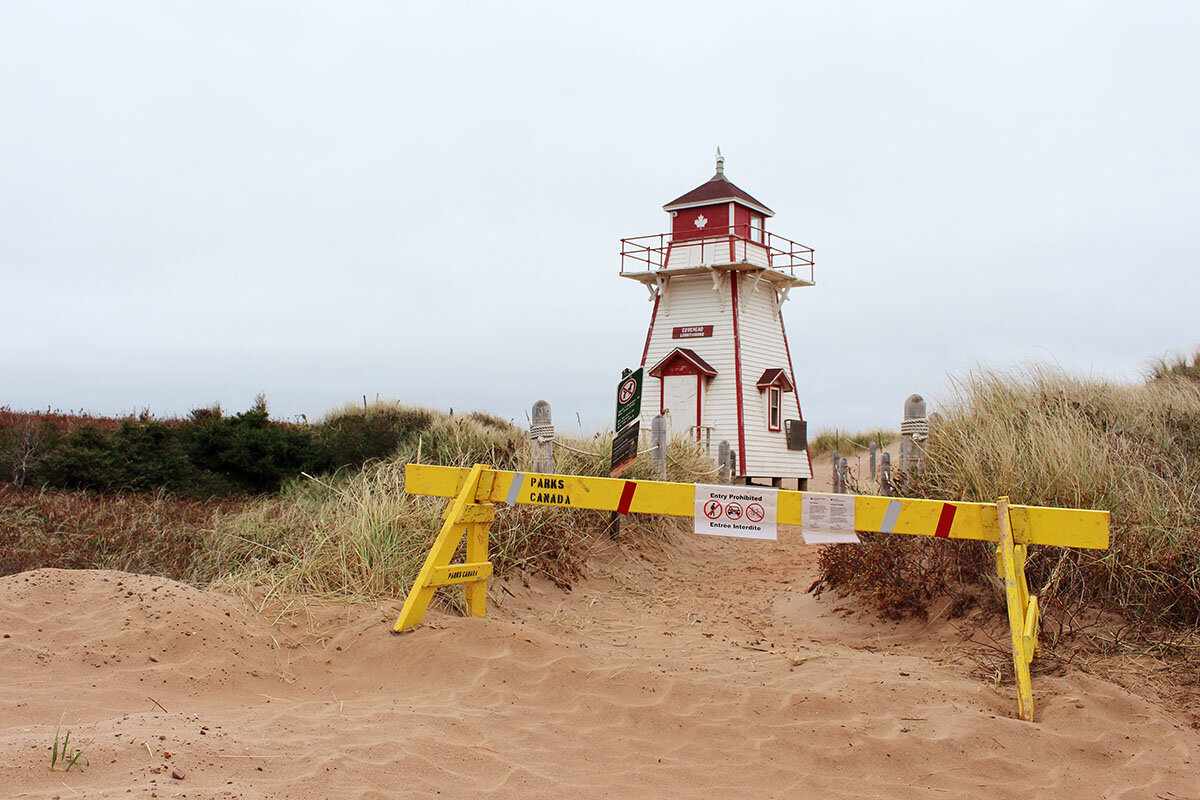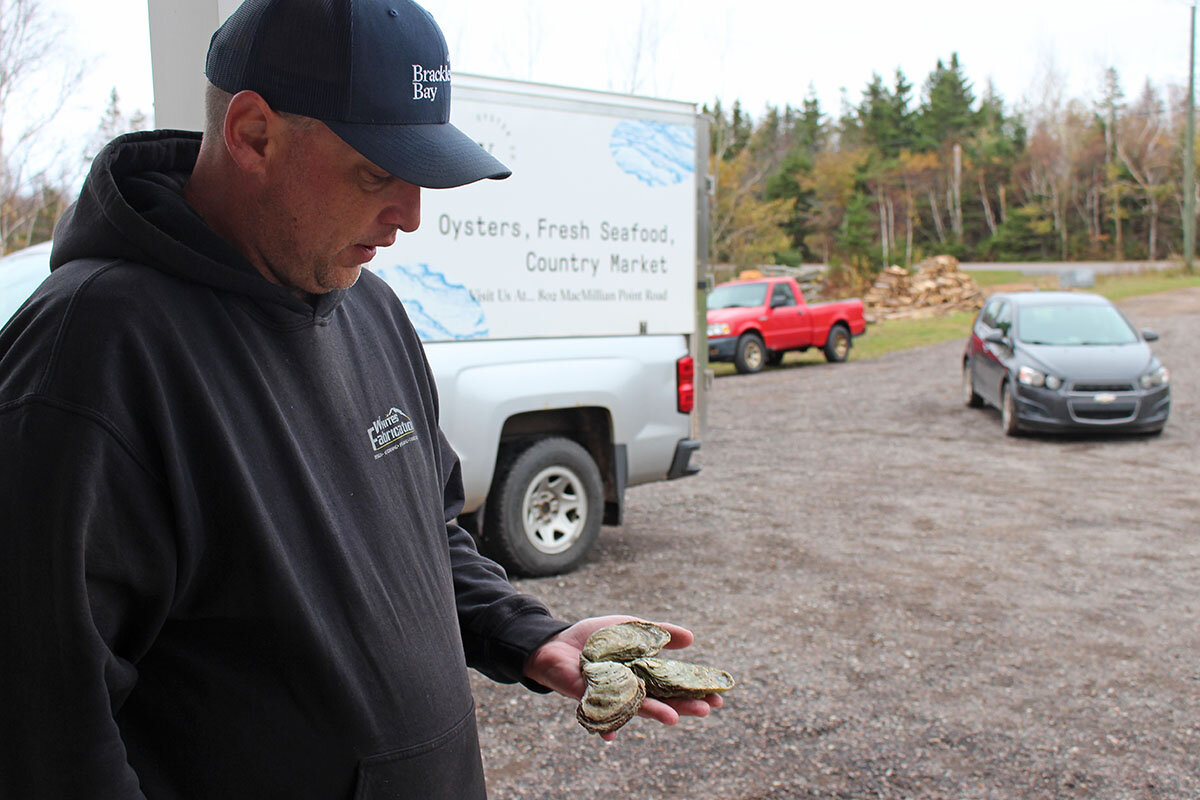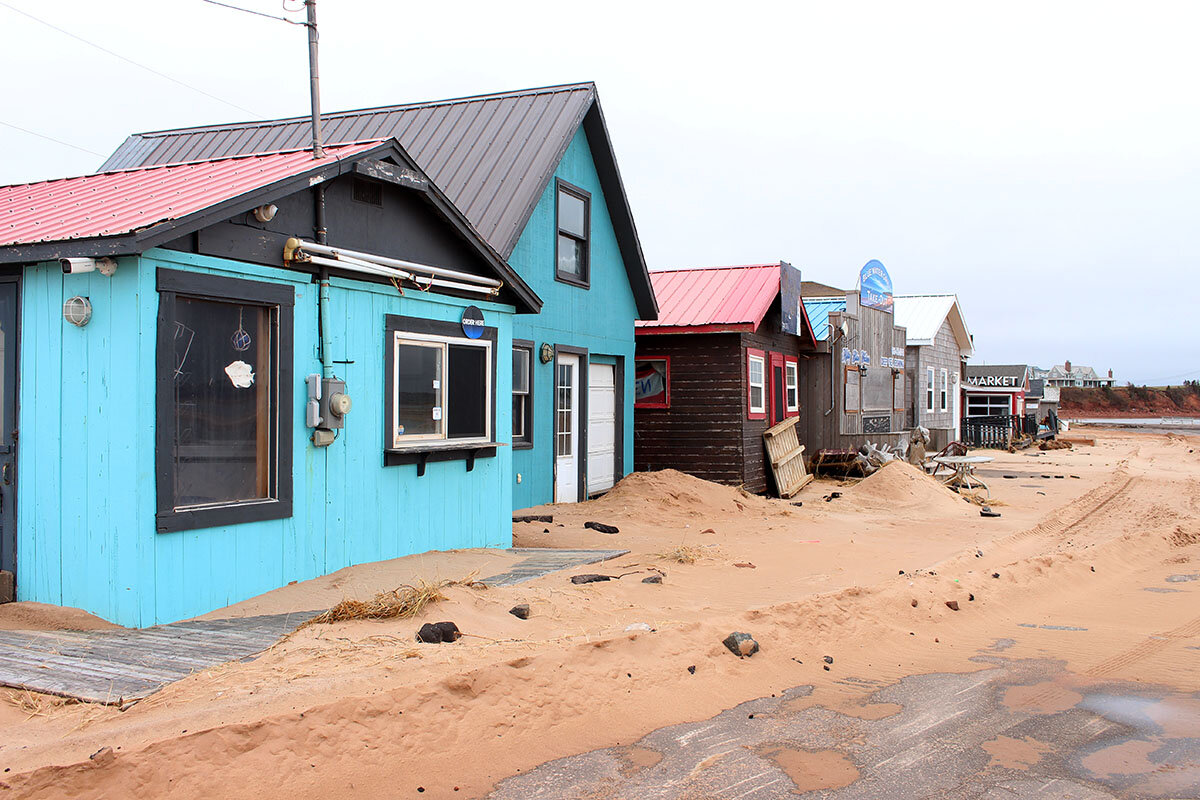Post-hurricane, Canada charts new relationship with the sea
Loading...
| North Shore, Prince Edward Island
Robbie Moore spent a week preparing his oyster farm as Hurricane Fiona barreled toward Prince Edward Island in late September. But that didn’t spare it from the impact.
On Sept. 24, Fiona roared across Atlantic Canada, leaving catastrophe in its wake, including two deaths. Prince Edward Island recorded 92 mph winds, and on the North Shore, where Mr. Moore’s farm is located, the storm ripped up trees, reduced wharves to splinters, and flooded structures. By the time he could get to his farm to assess the damage several days later, he found some sections had vanished, and this year’s oyster crop had been tossed into the treeline, 30 feet from the high-water mark.
Still, he counts himself relatively fortunate. Some people lost everything, and as much as people had prepared, there was no way to prepare for the damage Fiona caused. “There’s a lot of people very discouraged right now,” he says.
Why We Wrote This
Canada never experienced a storm as powerful as September’s Hurricane Fiona. Now, Prince Edward Island, like many coastal regions, is rethinking how to coexist with an unpredictable ocean.
The recovery is expected to take years. But given what Fiona has shown about the growing threat posed by hurricanes, the more transformative effect could be still to come. As hurricanes become a more regular, immediate danger up and down North America’s Eastern Seaboard, Atlantic Canada – like regions from the Gulf Coast to Florida to New England – is beginning to grapple with how climate change is rewriting people’s relationship with the sea.
“Pictures don’t do it justice”
While Atlantic Canada is no stranger to volatile weather, Fiona marked a departure. Past storms, such as Hurricane Dorian in 2019, had weakened before they made landfall. But Fiona retained much of its strength, making it the most powerful storm to ever hit Canada.
University of Prince Edward Island climatologist Adam Fenech says that while Fiona was unprecedented, the storm was not unanticipated, given projections of stronger storms in the Atlantic hurricane season. “All the things that we’ve been talking about for 30 years are all coming true,” he says.
Despite that consensus, Dr. Fenech has spent years playing Cassandra to an at-times skeptical public. Half a dozen years ago, when Dr. Fenech was invited to give a talk about coastal erosion at a cottage development on Prince Edward Island’s North Shore, he warned that many of the properties could disappear in a big storm. Residents were unconvinced. “Let’s just say they didn’t want to sit and chat about what the possibilities were,” he says.
When Fiona hit, 12 cottages in that development were swept off their footings; several were swallowed wholesale by the ocean. In other places, people’s year-round homes were destroyed.
But in a region where communities have deep ties to the coast, housing isn’t the only concern. Atlantic Canada is the site of Canada’s most lucrative fisheries, operating out of nearly 200 small harbors dotting the coastline – nearly three-quarters of which were affected by Fiona in some way.
For many harbors, the destruction caused by Fiona will mean an expensive rebuild. But some people are saying the reconstruction should look different.
When Fiona hit Newfoundland’s southwest coast, Shawn Bath was a day’s drive away; as the scale of the damage came to light, he loaded his truck, hitched his boat, and headed across the province.
There, he found communities devastated by storm surge. One man he encountered in Port aux Basques, where at least 80 houses were damaged, described running out the back door as the ocean came in the front, and clinging to a light pole to avoid being swept out to sea.
Mr. Bath also found shorelines littered with debris. In many places, wharves and fishing stages had been smashed like toothpicks, scattering fishing gear into the water. Mr. Bath and his crew – who run a marine debris cleanup project called the Clean Harbours Initiative – made their way to a small community called Burnt Islands, and got to work.
Forty boatloads and two weeks later, that shoreline is clean, but it’s just one small section of a wide area. “It’s overwhelming,” says Mr. Bath. “Pictures don’t do it justice.” And he’s worried that there are more than a thousand fishing nets drifting along the bottom of affected harbors. He says urgent action is needed to remove nets from the water before they can damage ecosystems – and undermine local fisheries.
But in the long term, Mr. Bath says the way harbors are laid out needs to be rethought. Fishing infrastructure has traditionally been placed close to the water because that’s where it made the most sense to be. But that calculus has changed.
“There’s no point in rebuilding and filling all these stages with nets again, if two years down the road the same thing happens,” he says. “Keeping fishing gear on the water’s edge is no longer a reasonable thing to do.”
“The island is different now”
These harbors aren’t the only landscape that could be changed in Fiona’s wake. In places with sandy coastlines, as the storm passed, residents found the rolling dunes that characterized areas like the North Shore of Prince Edward Island had completely disappeared.
For Prince Edward Island musician Tara MacLean, who grew up playing in the dunes, the shock of seeing a beloved landscape suddenly vanish was indescribable. “I can’t imagine a more sacred place to Prince Edward Islanders than the shoreline,” she says.
Sand dunes are a naturally dynamic ecosystem. Given time – and the right conditions – they could return. But Ms. MacLean is worried that, given how Fiona portends the storms to come, the dunes may never come back. “I don’t think I’ve even touched the grief that is coming for the way the island was,” she says. “The only way that I know is just to be with that feeling and learn to accept that the island is different now.”
Ms. MacLean says the sorrow for what’s been lost should serve as a wake-up call on the risk that climate change poses to the region. But it’s that emotional connection to the water that could also make changing the relationship to it difficult, and when things return to normal, the allure of living close to the water may return, too.
Some Atlantic provinces have already put in place measures to guard against that. In Nova Scotia, the provincial government has passed first-of-its-kind-in-Canada legislation for how close people can build to the water, regulations for which are to come into effect in 2023. Advocates say Fiona has shown why other Atlantic provinces need to follow suit.
In the meantime, even existing settlements may eventually need to move. For years, managed retreat – the idea of pulling back from the water – has been a third rail in Canada, says Kate Sherren, a social scientist at Dalhousie University in Halifax, Nova Scotia. Fiona has changed that. “It wouldn’t seem ethical anymore, to put people in what is so clearly harm’s way, quite aside from the waste of money that would represent.”
In Canada, there is little insurance available for coastal flooding – meaning that for the vast majority of those whose homes were affected by storm surge, the damage is not covered. The insurance industry is currently in talks with the federal government about a national public-private flood insurance program, similar to the Federal Emergency Management Agency’s. But Dr. Sherren says any policies should encourage communities to work with increasing coastal volatility, rather than clinging to a reality that no longer exists.
“We’ve been building on and living on this borrowed space,” she says. “When these events happen, there needs to be a program in place that can step in to help people to make decisions other than building back where they were.”
“You can’t control water”
Some are already looking at making a shift.
Rita Raymond grew up in St. Vincent’s, on Newfoundland’s east coast. That side of the province was largely spared Fiona’s impact, but severe storms have nonetheless become more frequent, often washing out the community’s main road. That’s changed how Ms. Raymond – who spent decades living in British Columbia and moved back to the community 14 years ago – feels about living on the coast.
When she and her husband bought their house, which is five minutes from the beach, she says she didn’t see the ocean as a threat. Now, unlike the tourists who come to stay at her bed-and-breakfast because they want to be close to the water, Ms. Raymond says she’d like to get farther away.
“In British Columbia, we had fire hazards in the summertime and a fear of fire, and I always thought fire can be controlled, to a point,” she says. “But you can’t control water.”
Ms. Raymond says she’s contemplating buying on higher ground or moving to another community.
But in some places, moving is not possible.
On Prince Edward Island’s North Shore, Mr. Moore says he’s spoken to oyster farmers who are too dispirited by the scale of their loss to start over. Mr. Moore himself is facing volatile conditions going forward – it takes roughly eight years for an oyster to reach its full size, well in excess of the interval between recent hurricanes. Still, while he says he’s planning on making changes to respond to the threat of worsening storms, there’s only so much he can do. He has a plot to farm – an oyster lease that’s existed for almost a century – and he’s constrained by those boundaries.
“Your hands are sort of tied, right?” he says. “Something can always come up, and you can’t not try to rebuild.”






